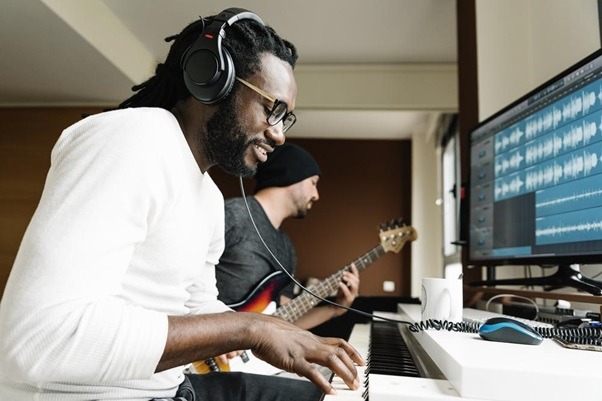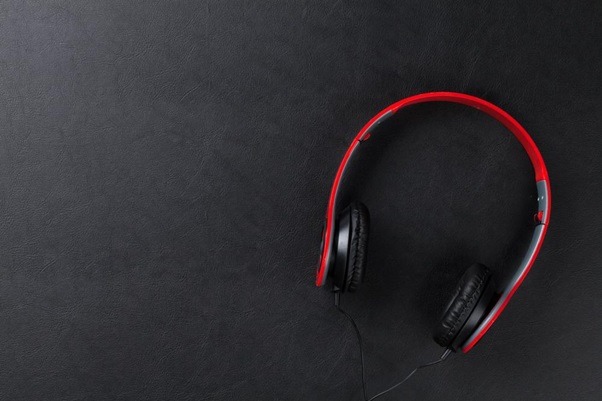A set of expensive equipment and a studio with excellent acoustics is not something that anyone who wants to do mixing can easily afford. In this case, using headphones is a good option. Headphones have their drawbacks and sound transmission features, but it can be compensated by following four basic rules for successful headphone mixing.
Rule 1: Use Quality Headphones
Of course, the most important part of headphone mixing is the headphones themselves. The market abounds with headphones of various price and quality. If you intend to create quality music, you cannot save on this instrument; otherwise, it will be of little use.
Traditionally, closed-back models are used for tracking. Because of their design, they prevent sound from leaking from the headphones to the microphone. They are also better suited for mixing in noisy environments. But closed-back models have two significant drawbacks. Firstly, during long mixing sessions, ears begin to sweat. And the second drawback is the distortion of low frequencies, which occurs due to the pressure inside the headphones.
While mixing, it is very important to get the best possible sound reproduction, so open-back headphones are more suitable for this purpose. To some extent, they can provide cross-feed, which is so lacking in headphones.
If we talk about the best headphones for mixing music, it is impossible to pass by such models as Sennheiser HD 650S, AKG 701, Beyerdynamic DT 770 Pro Studio or Audio-Technica ATH-AD 900X.
Rule 2: Use Helper Plugins
The main disadvantage of using headphones is the lack of cross-feed. Therefore, even if your music sounds great on headphones, the sound will be perceived slightly different when played through the loudspeakers. When listening to the audio on external speakers, the sound reaches one ear a fraction of a second faster than the other. It sounds natural to our ears, so the harmonious mixing of the right and left channels greatly affects the perception.
Fortunately, there are special headphone mixing plugins that can provide a cross-feed effect. For example, plugins such as Wavelab Externalizer can move virtual speakers, which provides a rough idea of how the mix will sound on external speakers. In any case, it is better from time to time to double-check and compare the sound through a real speaker and headphones.
In addition, you can find much more headphone mixing plugins with a wide variety of functions that are designed to make the mixing process easier and more pleasant. For example, some plugins provide an intelligent equalizer service that analyzes your mixes and makes suggestions on how to improve them. This is especially important if you consider the fact that headphones have problems with inaccurate low frequencies reproduction.
Some services also allow doing music mixing online and provide a set of tools and plugins for this purpose.
If you are not completely confident in your mixing skills but want to bring your track to perfection, you can contact a company that provides the service of mixing and mastering online and a team of experienced audio engineers will help you.
Rule 3: Take Care of Your Hearing
Your ears are also one of the main tools for creating amazing mixes. Therefore, you should take care of your hearing as well. Don’t increase the volume above the recommended limits. If you cannot hear something, it is most likely not about the volume, but about the fact that you are already tired. Take a break.
Overuse of increasing the volume while listening to music will only reduce the sensitivity of your hearing, which will prompt you to turn up the volume again. Choose a comfortable volume for yourself and work with it, and when it is not enough – distract yourself.
In general, we recommend taking breaks frequently. It will keep you from making mixing mistakes and let you spot imperfections with a fresh eye after you put the headphones back on.
Rule 4: Use a High-Grade Headphone Amplifier
Last but not least, high-grade headphone amplifiers can greatly improve sound quality and let you hear the full musical gamut of your mix, down to the smallest details. You will get a deeper, richer sound with lower distortion and you can use this to develop a more detailed musical composition.
As with headphones, if you want to create professional mixes, you can’t save on amplifiers.
Little Labs Monotor will be your great assistant in music mixing. It is a professional dual output amplifier that offers extensive mono monitoring capability, super low noise linear voltage regulation and will be a great match for true audiophiles.
RNHP Precision Headphone Amplifier is also worthy of mention.
Speaking about budget options, it is worth paying attention to the Apogee Groove, which is still a quality amplifier while having a very compact appearance.
Conclusion
In conclusion, we would like to remind you that headphones can’t fully replace a professionally equipped studio of an audio engineer and have a number of drawbacks. Partially it can be compensated by plugins and auxiliary devices such as amplifiers. So headphones can still be considered a suitable tool for creating good mixes, especially for beginners or people who, for some reason, cannot work in a full-fledged studio.s



